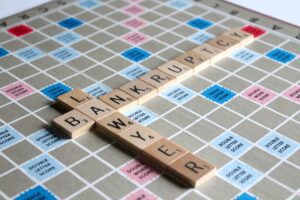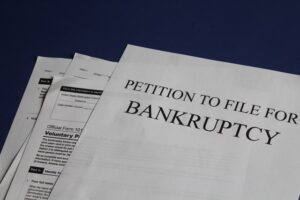Ways to recover and thrive after bankruptcy

Lots of people today live on credit. Even if not using credit cards to pay for everything, they live in houses on which they pay mortgages and drive cars they bought on credit. But the story doesn’t end here. Many small businesses rely on credit to stay afloat, as well. And if your lifestyle depends on having a good credit score, the idea of losing it all is more than scary. However, there are ways to recover and thrive after bankruptcy, and that’s what we’re here to talk about.
Most people decide to go down this path when they realize that they’re in over their heads with debt, and they can’t help but wonder, will this be the end of their financial future? Luckily, we have some good news on this front. Filing bankruptcy isn’t the end of everything. With that said, it will take some time to get it out from your credit report, but you can get there.
On the other hand, filing for bankruptcy might not be the best thing you can do. So, be sure to talk to a lawyer before you do anything. And if they advise you to do it, here are some things you should know about different types of bankruptcy.
Different types of bankruptcy for individuals
As an individual, there are two types of bankruptcy you can file for – Chapter 7 and Chapter 13. You can learn more about them if you look at our bankruptcy FAQ, but we’ll cover the basics here, as well.
In essence, filing Chapter 7 means that all of your assets will be sold, and all the money you get will go to paying off your debts. On the other hand, chapter 13 lets you keep your property. Then, you can work with it and plan how you will pay your debts in the next 3 to 5 years.

Which chapter should you go for?
If you have a regular source of income, and you qualify for it, it’s probably the best idea to file Chapter 13. Here are a few reasons why this is.
• You can save your home from foreclosure, even if it’s already in the process.
• You’ll get an opportunity to catch up on mortgage payments.
• Reschedule your secured debts.
• Any co-signers on your consumer debts are protected, so you don’t have to worry about them.
• You don’t have to deal with paying each company you owe individually. Instead, you make one payment to your trustee, and they make the payments on your behalf.
Know that no matter which chapter you go for, you’ll have to participate in a credit counseling program. And if you’re already in the middle of the process, here are some tips and tricks for making it through. Find a way to minimize stress and maximize access to finances, and it’ll all be over in a blink of an eye.
Downsize your lifestyle
One of the first things any expert would suggest is to move into a smaller space and downsize to reduce living expenses. In the world we live in, it’s normal to live in a big home, own countless electronic devices, and subscribe to plenty of monthly services. However, having access to all these things can get expensive pretty fast. And if you think about it, you don’t really need them all .
If you feel like you can’t go on without your cable TV, or if you’re in the middle of a service contract, it doesn’t make sense to cancel it. However, you can choose to downgrade your package. You’ll still have what to watch, but you’ll save money each month.
The lower your monthly expenses are, the quicker you can pay off your debts. But let’s take a look at a few other ways to recover and thrive after bankruptcy.

Share your internet bill with neighbors.
If you live in an apartment, sharing your Wi-Fi bill with a neighbor is a great way to cut expenses. Talk to them and let them know that you’re trying to spend less money. If they’re up for it, find out who has the best connection and cancel all the other services.
The only problem here is that if the router isn’t in your apartment, you don’t have any control over it. If it goes down, you’ll have to rely on someone else to fix it, and that’s far from ideal. But, you’ll be saving money. And if you need it so bad, you can always hop to your local library or Starbucks and connect to free Wi-Fi there.
Embrace living without credit
If you have relied on using credit to live your life, it can be scary to let go of it just like that. And the longer you used your credit card, the more foreign it may seem to live without it. However, if so many people can do it, why couldn’t you?
And don’t get us wrong here. You don’t have to live in your car in the woods to avoid falling into a deep dead hole. You just need to make some adjustments to your daily life that will make it more financially stable.
Don’t forget that credit is actually debt. So, the more credit you have, the more debt you have. And if you’re dealing with bankruptcy, that is the last thing you want.

Open a new credit account for rebuilding your credit
When you opened your first credit account, it probably was for something important like a home or a car. And these are what credit should be for, not unnecessary purchases. So, the only reason why you should consider opening another one is to rebuild your credit.
Of course, if you decide to take out another loan, you won’t be able to pick too much. All the chances are that you’ll have to go for one of those no credit check loans, and for them, you’ll pay a higher interest rate. On the other hand, that’s the price you’ll have to pay to rebuild your credit.
We don’t have to mention that taking out another huge loan isn’t one of the ways to recover and thrive after bankruptcy. Instead, you want to take a small loan that you can afford to pay interest on. Use it to pay for your previous debts, and with time, you’ll be in the clear.
